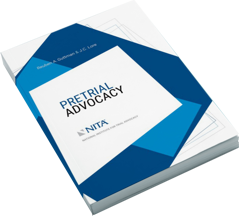Trial instructors across the country implore students not to ask leading questions on direct examination. For their part, students struggle to formulate lines of inquiry devoid of leading questions. Amidst their quandary, students find themselves perplexed when they watch demonstrations or clips from real trials and see leading questions frequently used on direct examination. So what’s the deal?
Perhaps students are taught a practice without an appreciation for the source of the practice. Federal Rule of Evidence 611 outlines the “Mode and Order of Examining Witnesses and Presenting Evidence.” It is a short and easily understood rule. It is also a rule that is probably not taught in law school evidence classes. Yet FRE 611 is a gold mine of information because, among other things, it specifically addresses the use of leading questions. FRE 611(c) states:
(c) Leading Questions. Leading questions should not be used on direct examination except as necessary to develop the witness’s testimony. Ordinarily, the court should allow leading questions:
(1) on cross-examination; and
(2) when a party calls a hostile witness, an adverse party, or a witness identified with an adverse party.
The rules of evidence do not categorically proscribe leading questions on direct; they may be used “as necessary to develop the witness’s testimony.” Questions that are foundational or involve matters that are not in dispute are the types of questions that can be posed as leading questions. Doing so creates efficiencies; it moves the case along. Interposing leading questions under these circumstances also makes the dialogue we call “direct examination” more natural and less formulaic. Think about a recent conversation with a friend or relative: it is human nature to cut to the chase with a leading question. And with court systems burdened with litigation—especially as we emerge from the pandemic—cutting to the chase is an efficiency that moves dockets.
For a new lawyer or one learning litigation skills, FRE 611 is empowering. Consider this line of questioning:
Q: Officer Smith, you were riding in the police cruiser with Officer Jones when Officer Jones pulled over my client’s vehicle?
Opposing Counsel: Objection: leading.
Counsel: Your Honor, I am just trying to move this proceeding along; this is foundational, and this is not a matter in dispute.
Judge: Overruled.
None of this is to say that students should not be taught how to ask non-leading questions or how to develop the skill of using prompts that turn the witness on direct examination into the storyteller. Learning how to use words like “who,” “what,” “when,” “where,” and “how,” or similar words that place the witness in the driver’s seat as the storyteller, is an important skill. Yet it is also important to learn where to use leading questions to move the testimony along. Moving it along empowers the decision-maker—judge or jury—to focus on the witness when important questions, such as those dealing with matters in dispute, are asked.
